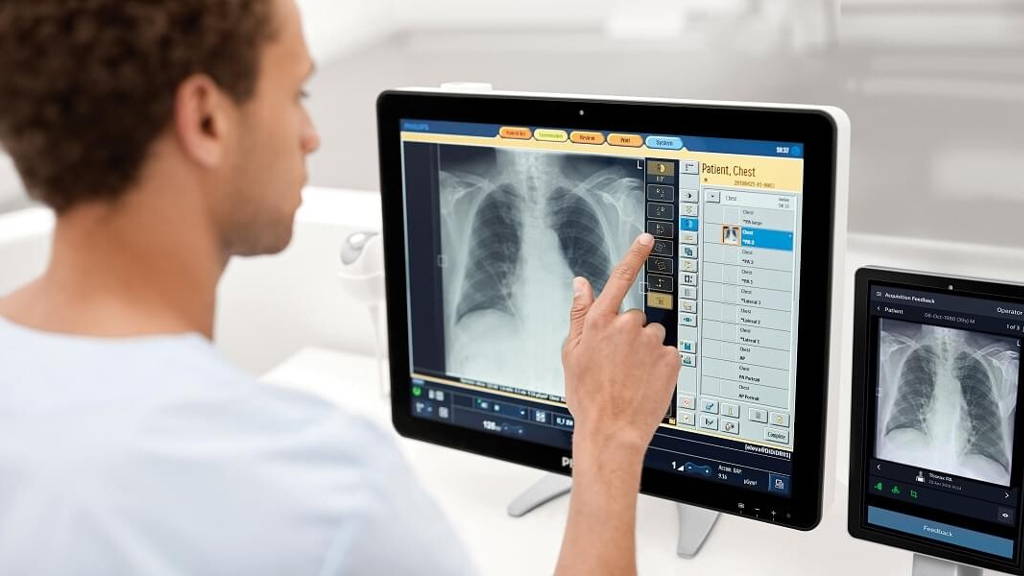Geoffrey Everest Hinton did not pull his idea out of thin air. He is a cognitive psychologist and a computer scientist known for his work on artificial neural networks; he works in Google and at the University of Toronto. However, this renowned scientist did not consider three factors: the complex healthcare ecosystem, demand/supply of health services imbalance and the characteristics of doctors’ work.
The US Bureau of Labor Statistics forecasts that the number of radiology and MRI technicians will grow by 7% in 2019-2029. According to the American College of Radiology report, one-third of radiologists use AI algorithms at work these days. The FDA has already approved 80 radiological algorithms – about half of them are used in practice.
Hinton did not consider that the demand for radiologists is growing, caused by the increase of screening programs and aging societies. According to the latest data, the NHS estimates that the shortage of radiologists amounts to about 30%, which translates into a deficit of approximately 1,800 employees. Despite these statistics, Hinton’s thesis is not necessarily wrong. If AI keeps improving at the same rate as it currently is, the precision of machines will outgrow people’s skills in assessing medical images. This option is still on the table, similarly to other scenarios.
SCENARIO 1. Reciprocal effect. For fear of AI, radiology will become less popular and the gap between the demand and supply of radiologists will grow.
In developed countries, the number of radiologists is growing, but their availability in the job market is severely limited, similarly to the general availability of doctors. Historically, medical imagining was one of the most dangerous jobs due to exposure to X-rays. Despite technological progress, radiologists still work with ionizing, infrared, ultraviolet (UV) and electromagnetic radiation on an everyday basis. Moreover, this profession ranks relatively low in popularity statistics. Currently, students are much more eager to choose specializations such as family medicine, psychiatry, neurology, paediatrics or cardiology. Students carefully plan their careers, taking job prospects into account. News that radiology is the field of medicine in which AI algorithms will become popular the fastest may be an important argument for students.
At the end of 2020, the British Institute of Radiology published a study entitled Artificial intelligence in radiology: does it impact medical students preference for radiology as their future career? Its findings surprised the researchers.
Out of 476 respondents, only 34 people considered radiology as their first choice of specialization, 26 people considered it as their second choice, and for 65 people, it was their third choice. Furthermore, 31% of respondents agreed that AI would replace radiologists in their lifetime, whereas 44.8% agreed that AI would reduce the number of radiologists needed in the future. Even when it comes to the respondents for whom radiology was the first choice, 58.8% were concerned about the unsure impact of AI on radiology. The fear that AI may replace radiologists in the future had a negative impact on radiology as a prospective career path considered by medical students.
SCENARIO 2: Acceleration effect. Radiology is becoming one of the fields with the fastest technological progress, which is an incentive for a new generation of doctors.
This thesis was posed by a radiologist who is a friend of mine. As a young doctor entering the job market and interested in technological innovations, he expects modern working conditions and wants to use digital health tools in his daily practice. And no other field can offer such perspectives, for example, operating systems based on AI. Radiology ranks first in the statistics of medical algorithms approved by the FDA. Far behind, in second place, is cardiology. Will this argument be of growing importance for a generation of doctors brought up in the digital era?
SCENARIO 3. Adoption effect. As the popularity of algorithms in radiology keeps growing, the competencies of radiologists and the quality of their work will improve.
This is the most popular view and, at the same time, a non-controversial compromise between both sides of digital transformation in health care – the world of technology and medicine. It is also a model which is already working well. For example, PACS systems with elements of AI automatically identify worrying lesions and pre-select and pre-evaluate images. For a radiologist, it is an extra set of eyes that enables them to make sure that no detail has been overlooked.
During the first months of the COVID-19 pandemic, quickly developed algorithms were able to select coronavirus patients on the basis of a pattern of lung lesions, which significantly accelerated the diagnosis in the overburdened health facilities. When AI becomes more accurate than radiologists, radiologists will benefit – they will no longer need to do administrative and repetitive manual work, which consists in analysing images pixel by pixel. AI will improve the precision of diagnosis and patient safety.
SCENARIO 4. Denial effect. The growing presence of AI at work does not mean that it is adapted. Doctors do not trust the decisions made by algorithms and ignore their opinions.
In order to become a radiologist, it can typically take up to 13 years. And an AI system is supposed to be better than doctors are? So the resistance to accepting AI is understandable. Even though it can be assumed that many prejudices will weaken as digitally literate doctors enter the job market and digital transformation progresses, the scenario of harmonized human-machine cooperation is still too optimistic. New challenges are already on the horizon. Doctors will have to cooperate more closely with IT systems, and new problems will come up, such as AI ethics, task sharing and liability for medical errors. Apart from that, digitalization is progressing so rapidly that doctors do not have time to become familiar with new features during an intense day at work – even if they improve workflows and make the job easier. As a result, we have a growing gap between technological capabilities and the ability to adapt them.
The Impact Of AI On The Future Of Radiology – 4 Scenarios
Tuesday, October 19, 2021

AI
News





